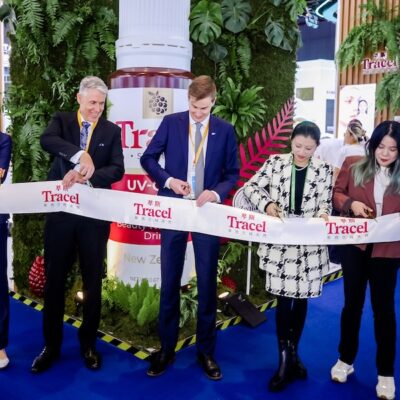Unpacking the ASEAN F&B export opportunity
A virtual event organised by the NZ-ASEAN Food and Drink Exporters Forum under the banner ‘Inside the Minds of ASEAN F&B Importers’ provides a unique perspective.
An April virtual event organised by the NZ-ASEAN Food and Drink Exporters Forum under the banner ‘Inside the Minds of ASEAN F&B Importers’ provided a unique perspective on one of the fastest growing regional markets for New Zealand’s food and beverage brands.
In 90 minutes, attendees were able to gain valuable insights on the six key ASEAN (Association of Southeast Asian Nations) markets (The Philippines, Indonesia, Malaysia, Thailand, Singapore and Vietnam) – providing a perspective which, pre-Covid, would only have been possible by physically visiting the region.
Chair, Cameron Gordon, Director of specialist F&B export development agency INCITE, ran the event like clockwork to ensure each market was covered in detail.
Cameron understands that the ASEAN market can be daunting for Kiwi firms – offering diverse consumer, retail and regulatory challenges. Deciding which market is best to target first can be a real challenge for food and beverage exporters especially.
His company segments each market using three variables– consumer sophistication, retailer sophistication, and regulatory requirements – with each market presenting a different blend of the three.
“Singapore, for example, scores high on all counts, it’s a very open market and therefore, in theory, a good first stop for Kiwi exporters,” says Cameron. “Of course, that also means it is very competitive.
“Ultimately, it all comes down to a brand’s appetite for time-frame. A market like Singapore is theoretically easier to develop than, for example, Indonesia.
“On the other hand, while Indonesia has a less sophisticated consumer and retail environment, and more challenging regulatory barriers – meaning a lot of other suppliers won’t look at it – it does mean that if you’re a brand with a longer timeline and you’re prepared to jump through those ‘flaming hoops’, then there is a genuine long-term opportunity within that market. Remember, it’s a market of 270 million people, with a growing middle-class, versus Singapore’s six million.”
So always consider that blend of consumer and retailer sophistication and regulatory environment, and how it fits in with your time-frame, he says.
Think online, think digital
One of the key points raised by the webinar, which featured insightful market reviews by key importers and distributors from each of the six ASEAN markets, was that consumers are still in buying mode and grocery channels across the region are still performing well despite Cov’d-19’s restrictions – just as they are in New Zealand.
The health and wellness categories are especially performing well, particularly around plant-based products and healthier food items.
“Online sales channels have grown, which means more opportunities for specialty brands across those channels,” says Cameron. “But, as the distributors pointed out, it’s important to have a bricks and mortar strategy that works hand-in-hand with your online one.”
Digital marketing is increasingly driving sales, says Cameron. It has become a market expectation. However it’s not possible to do all the in-store tastings and promotions on the same scale as pre-Covid.
“It’s now expected that brand owners will provide more localised digital marketing support to drive both sales and brand awareness.”
Maximise your chance of success
It’s easy to get it wrong when approaching the Southeast Asian market for the first time. This was another point highlighted during the event. This can include handing over control to third-party consolidators or the first importer that makes email contact to set and implement the strategy for your brand, explains Cameron.
“It’s crucial that brand owners participate in the strategy, and understand the norms around supply chain, margins, pricing expectations, promotion, and so on, to get the best deal in each market.
“If they know what a good deal is from a marketing support or supply chain perspective, in terms of what margins are reasonable from each of the players in the chain, they can negotiate a much better deal.”
Turning up with a generic price-list that doesn’t factor in each local market’s requirements isn’t exactly a success strategy either, he says. To negotiate the best deal in each market his advice is to understand the category composition and target market, then your competitors’ shelf pricing, brand support, and margins to distributors and retailers.
Pleasant surprises
Cameron says the webinar reinforced how bricks and mortar retail is still important across all the ASEAN markets. “It came as a pleasant surprise, to be honest.”
Guest speaker Jive Ng from FoodXervices in Singapore highlighted the fact that online sales currently represent less than ten percent of sales that his distribution business is making in Singapore.
While this depends on both the brand and category, with Covid-19 Cameron expected that online sales percentage to be much higher.
“Of course, in a market like Singapore you must remember that you’re surrounded by convenience stores and supermarkets, and their popularity remained strong during the height of the pandemic.”
Another pleasant surprise from the webinar is that distributors across the ASEAN markets are still actively seeking distribution opportunities for new brands. Successfully launching new products and brands are vital for a distributors ongoing performance.
“Covid may have sapped confidence, but people still understand how much business they need to put through to remain viable,” says Cameron.
ASEAN or Australia?
For Kiwi brands looking to jump the ditch and take on Australian brands, it can be a ‘tough row to hoe’, warns Cameron. The markets are very similar, and there’re few categories or niches to exploit. You’re also competing against larger manufacturers and dealing with inflated shipping costs.
Cameron believes while Australia will always provide a very important function for many Kiwi brands, each ASEAN market represents a unique opportunity. “There’re unique challenges too, but I would argue that having the knowledge and appreciation of those challenges does provide opportunities.”
Factor in consumer and consumption growth, the emerging middle class, and the rise in spending – particularly in markets such as Indonesia and the Philippines – and you’ll realise these are significant opportunities, he adds.
“But it won’t happen overnight. You need a realistic time-frame to understand each of the markets, to formulate a pitch, and then go to market.
“It’s critical to get it right first time, and to work with agencies such as INCITE, who have a lot of experience getting the retail listings and launching brands in these markets.
“Once you’ve done the deal and your products are on the shelf, you can’t go back on price or the commitments you’ve made.”
“When you consider where world markets are going and where opportunities are presenting themselves in terms of volume and emerging middle-class consumers, then ASEAN markets are certainly worth considering.”
Different ASEAN markets also have unique functions, explains Cameron. “Singapore is important as a regional brand-building hub. It provides a platform for a brand building exercise.”
With their considerable populations, Indonesia and the Philippines have volume potential, assuming that the product profile and pricing structure is right for those consumers.
“ASEAN markets aren’t necessarily the silver bullet, but when you consider where world markets are going and where opportunities are presenting themselves in terms of volume and emerging middle-class consumers, then those ASEAN markets are certainly worth considering.”
For more on INCITE and its services go to: www.exportincite.com(link is external)(link is external) or email: [email protected]
This story was first published at exportertoday.co.nz






